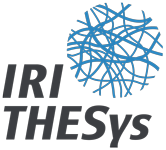Mining Story III
Small-scale gold mining in Tanzania

In the past, it is said, the gold in Tanzania was almost lying on the street; now the shafts have to be dug deeper and deeper. But even 100 m below ground there is no guarantee for the great treasure. Some therefore try to find the right places with witchcraft, others reconstruct where the German colonial rulers dug back then.
Mining between hope and danger
But despite all the hardship, gold mining is still an important source of income in the country, and especially young men can earn more money there with a little luck than in agriculture. This is why the search for gold is always a story of hope. After all, there are hardly any alternatives. That is what Anna Frohn Pedersen has found out. The doctoral researcher is currently living in Tanzania for the third time, where she is investigating small-scale gold mining in a total of six months of field research. “I didn’t want to look at the big mining companies, I wanted to get to know the living conditions of the many lone warriors who work manually in self-organised mines. But small-scale mining also covers a wide range – from those who climb into the shafts themselves to those who have enough money and land to let others work for them,” says the anthropologist via Skype.
The working conditions underground are hard and dangerous. The miners work 8-12 hours at a time and only come up to eat. Also, the safety arrangements leave much to be desired, and especially in small mines the people tend to use mercury, a toxic heavy metal that helps to extract tiny gold particles from the washed sand. “Using mercury is the cheapest and fastest way when working manually and with small amounts of ore. But it can easily lead to poisoning.” Other sources of risk are malfunctioning air compressors or collapsing tunnels in the rainy season. “Just two weeks ago there was an accident in a nearby village where two men were trapped in the mine without a possibility to rescue them. Meanwhile they lost contact, so the men are presumably dead.” The researcher admits: “I would never go down there. It’s too risky.”
Unknown export routes and interrupted information flows
What finally happens to the lifted gold, however, appears to be a mystery at least to most of the small miners. “Tanzania is a big gold exporter, but only a few people know the export routes. This is mainly due to the fact that the gold market is extremely informally regulated, even though attempts are currently made to combat smuggling. The routes run through middlemen, small and large dealers; the final destination is usually Dubai or India.” This lack of transparency has awakened the interest of Frohn Pedersen. “Normally, transparency always takes the consumer perspective into account, i.e. how can buyers find out where the products come from and under which conditions they were made? But what about the miners who risk their lives to capture some gold? They don’t know where it ends up in the world.”
In order to be able to better classify such questions, the young researcher uses the concept of so-called telecouplings. That concept refers to a network of flows that, in an increasingly globalised world, connects more and more, even distant, places. “What is moved between these places can be raw materials, technologies or people. In the case of Tanzania, however, it is much more exciting to ask about the invisible currents, such as information or discourses. At the international level, for example, there is currently a debate on sustainable mining. But when you’re here in Tanzania, you can’t detect anything about this at all.” Now Anna Frohn Pedersen wants to continue researching these interrupted or non-existent information flows.
Contact

Anna Frohn Pedersen
Email:
Anna Frohn Pedersen has been working on her doctorate at the Integrative Research Institute on Transformations of Human-Environment Systems (IRI THESys) at HU Berlin since 2018. Her research is part of the COUPLED ITN project funded by the European Union. Born in Denmark, Anna is specialized in empirical field research with a focus on visual methods. That’s why she also likes to hand over the camera in Tanzania, so that people can show their everyday lives themselves. It is planned to make a little film out of it.


